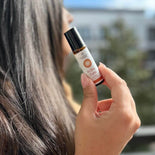Simple Steps For Testing EMF Devices
Key Takeaways:
- How to Test EMF at Home: Learn to measure baseline EMF levels and track changes with meters, analyzers, and bioresonance tools.
- Why EMF Testing Matters: Testing empowers you to uncover hidden EMF sources, validate protection devices, and create peace of mind in your home or office.
- Practical Steps for EMF Protection: From adjusting layouts to installing harmonizers, consistent testing and small lifestyle changes support healthier, more balanced living.
When it comes to EMF protection, trust is built on evidence. Whether you’re electrosensitive or committed to reducing exposure in your home or workspace, knowing how to verify the effectiveness of your EMF devices is essential. The good news? You don’t need to be a scientist to do it.
At Life Harmony Energies, we empower individuals with both energetic solutions and practical tools. Our bioenergetic EMF harmonizers are designed not just to block, but to neutralize and harmonize disruptive frequencies, and there are clear, measurable ways to observe their impact.
In this blog post, we’ll walk you through the exact steps to test EMF levels around your environment using accessible tools like EMF meters. You’ll learn how to take baseline readings, test before-and-after device performance, and gain confidence in the energy shifts.
Why Knowing How To Test EMF Matters
Understanding how to test EMF in your environment is crucial for anyone committed to holistic wellness. By actively measuring electromagnetic fields, you gain clarity, control, and peace of mind, empowering you to make genuinely informed choices about your health and living space.
Detect Hidden Sources
EMF emissions can come from unexpected places, such as appliances, wiring, or even neighboring devices. Accurate testing helps uncover these silent contributors to your daily exposure.
Support Personalized Wellness
No two bodies respond to EMF stress in exactly the same way. Regular testing lets you tailor your protective strategies and observe how your unique wellness responses evolve over time.
Validate Bioresonance Devices
Testing creates direct feedback on the impact of harmonizers or neutralizers in your environment. This hands-on approach supports scientific curiosity and intuitive “felt difference” experiences.
Promote Peace Of Mind
With reliable test data at your fingertips, you gain confidence in your daily routines, knowing you’ve taken active, informed steps toward creating a safe and nurturing living space.
Tools You’ll Need To Measure EMF Exposure
With the right tools, you can pinpoint sources of electromagnetic fields and track the effectiveness of holistic EMF protection solutions. Here are the key devices you’ll need:
EMF Meters
These handheld devices detect and quantify electromagnetic fields from sources like WiFi, smartphones, and electrical wiring. Look for meters that measure a broad spectrum, low-frequency (ELF) and radiofrequency (RF) emissions, for a fuller picture of your exposure.
Frequency Analyzers
A frequency analyzer identifies the precise frequency range of EMF emissions. This allows for a more nuanced approach, especially for monitoring specific sources, such as 5G or Bluetooth devices.
Bioresonance Testing Tools
For those seeking insight beyond standard measurements, bioresonance tools gauge the subtle energetic influence of EMFs on the human body. These may include specialized scanners or wearable testers, providing additional holistic wellness information.
Laboratory Testing Kits
Used for in-depth analysis, laboratory kits allow for the collection of environmental samples or device data. Results returned from professional labs can validate and complement your at-home EMF readings.
Armed with these tools, you’re empowered to make informed choices, supporting scientific inquiry and holistic well-being in your everyday space.
Step-by-Step Guide To Performing An EMF Level Test
Understanding how to test EMF in your environment empowers you to make informed decisions for your space and wellbeing. Here’s a streamlined process that blends scientific accuracy with everyday practicality.
Select The Right EMF Meter
Choose a reputable EMF meter that detects a range of frequencies, especially those from everyday household electronics and WiFi.
Prepare Your Environment
Turn off or unplug unnecessary electronics to establish a clear baseline before you begin testing.
Map Out Testing Points
Identify key areas where you spend the most time, such as bedrooms, workspaces, and spots near routers or major appliances.
Measure EMF Levels
Hold the EMF meter steady at each testing point. Note the readings, paying attention to spikes when devices are on or off.
Record And Analyze Results
Log the data from each location. Compare levels and look for patterns or unusually high readings that could impact wellness.
Re-Test After Interventions
If you introduce protective solutions or reduce device usage, repeat the process to observe any changes in EMF exposure. This holistic approach allows you to “feel the difference” with each adjustment.
Understanding Your Readings: EMF Levels Explained
Accurately interpreting EMF measurements is essential for creating a balanced and harmonious living environment. While testing EMF is straightforward, making sense of the numbers requires context and a blend of scientific understanding and practical awareness. Below, we break down what those meter readings mean for your daily life.
The Three Main Types Of EMF
- Electric Fields: Often measured in volts per meter (V/m), these fields usually come from appliances, electrical wiring, and outlets. Higher levels are most often found near power strips or unshielded cords.
- Magnetic Fields: Measured in milligauss (mG) or microtesla (μT), magnetic fields are typically strongest near motor devices like refrigerators or hair dryers.
- Radiofrequency (RF) Fields: These are given in microwatts per square meter (µW/m²) and are linked to wireless devices, such as cell phones, WiFi routers, and Bluetooth.
What’s Considered “High” EMF?
- Electric Fields: Ideally below 1–5 V/m in living spaces and bedrooms.
- Magnetic Fields: Preferably under 1 mG in frequently occupied areas.
- RF Fields: Lower than 10 µW/m² is best for restorative spaces; high-traffic urban areas may have much greater readings.
How EMF Affects Wellness
Each person’s sensitivity varies. Some feel mood, sleep, or concentration changes, while others may not notice immediate effects. Over time, holistic practitioners note that chronic exposure can contribute to a sense of “wired but tired,” or feeling drained despite rest.
Interpreting Sudden Spikes
Occasional spikes are often linked to device usage, microwaves running, incoming cell calls, or a neighbor’s WiFi signal at peak hours. Consistent high readings, however, indicate a sustained source and may warrant lifestyle or environmental adjustments for optimal wellness.
EMF Detector Instructions: Tips For Best Accuracy
Getting precise, reliable readings from your EMF detector is essential for understanding and managing environmental exposure. Use these practical guidelines to measure electromagnetic fields effectively, empowering you to support holistic wellness in your space.
Choose The Correct Setting
Set your detector to scan the intended frequency range, radiofrequency (RF), electric fields, or magnetic fields, to match your testing goals.
Calibrate Before Each Use
Power on your device in a low-EMF area and calibrate according to the manufacturer's instructions. This helps ensure your readings reflect true environmental levels.
Minimize Interference
Turn off unnecessary electronics nearby. For the most reliable data, avoid testing near large metal objects or during electrical storms.
Take Multiple Readings
Test at various times of day and in different spots. EMF levels can fluctuate, so multiple measurements provide a fuller picture of exposure.
Maintain Consistent Distance
To enable comparison between readings, hold the detector the same distance from each device or surface being tested, typically 0.5 to 1 meter.
Log And Analyze Results
Record your data in a notebook or digital app. Look for patterns, such as consistently high readings near specific devices, and note how you feel in those areas for additional wellness insight.
Common Areas To Test For EMF In Homes And Offices
With modern life’s reliance on technology, electromagnetic fields (EMFs) are present in nearly every corner of our homes and workplaces. Identifying high-exposure areas is the first step in creating a safer, more balanced environment. Here are the most crucial zones to check:
WiFi Routers And Modems
Test close to both the device and in the surrounding spaces where you spend significant time, such as desks or living room areas. WiFi routers continuously emit EMFs, even when not actively in use, making them a prime spot to consider adding an EMF blocker.
Bedrooms
Prioritize areas near beds, nightstands, and chargers. Sleeping spaces are critical because prolonged EMF exposure during rest can affect the body’s natural recovery processes. Creating best EMF protection strategies here can make a big difference for restorative sleep.
Workstations And Desks
Evaluate exposure around computers, monitors, power strips, and charging stations, especially in home offices or on shared tables. Multiple devices in one location can compound EMF output, so consider tools like an EMF blocking phone case for everyday device safety.
Kitchen Appliances
Check spots near microwaves, refrigerators, and smart devices. Major appliances and Bluetooth-enabled gadgets often give off detectable EMFs, especially when running. For smaller electronics you use near food prep or dining areas, subtle solutions like EMF protection for phone can help minimize exposure.
Common Living Areas
Assess areas around smart TVs, gaming consoles, and entertainment hubs. Due to their wireless connectivity, these devices remain sources of constant, low-level EMF emission. Adding small, portable options such as EMF protection stickers can be a convenient way to reduce risks.
Children’s Areas And Nurseries
Evaluate the proximity of EMF sources like baby monitors, tablets, or smart toys. Reducing EMF exposure in these sensitive environments is key for families seeking a wellness-focused home.
Bathrooms With Electronic Devices
Scan for EMFs from electric toothbrushes, hair dryers, and heated mirrors. Although not always considered, these items can contribute to total daily exposure.
What To Do With EMF Test Results
Measuring EMF levels in your home or workplace is an essential first step, but the real impact comes from what you do with those results. At Life Harmony Energies, we empower people to take explicit, informed action that enhances their energetic environment and long-term wellness. Once you have your EMF readings, here’s how to move forward:
Identify High-Exposure Zones
Review your measurements and flag any areas with unusually high EMF levels, especially bedrooms, workspaces, or nurseries. These are priority zones for remediation.
Evaluate Device Proximity
Check how close wireless devices (like routers, smart meters, or cordless phones) are to where you sleep, work, or rest. High levels near beds or desks may warrant immediate action.
Adjust Layout Or Usage Habits
Small changes can make a big difference. Move your WiFi router farther from living areas, unplug unused electronics, or switch off devices when not in use, especially overnight.
Install Harmonization Or Shielding Devices
Now that you’ve pinpointed problem areas, apply Life Harmony Energies’ solutions where needed. Our bioresonance-powered EMF harmonizers help neutralize disruptive frequencies, transforming stress zones into balanced, energetically supportive spaces.
Retest To Verify Changes
Re-measure EMF levels to verify improvements after installing protective devices or making adjustments. Many users report noticeable shifts in both device readings and overall well-being.
Create A Long-Term Protection Strategy
EMF exposure is ongoing, so your approach should be too. Consider whole-house EMF protection for round-the-clock coverage, wearable solutions for on-the-go peace of mind, and lifestyle changes that support energetic resilience.
Share Results And Learn
Connecting with community groups or holistic practitioners can bring new perspectives and recommendations. Sharing your experiences may help others discover helpful strategies for their own EMF wellness journey. For a deeper understanding, you can explore our blog post answering the important question: Is EMF radiation harmful.
Final Thoughts
Testing EMF levels doesn’t have to feel complicated or overwhelming. With the right tools and a simple process, you can better understand your environment and take meaningful steps to reduce exposure. At Life Harmony Energies, we believe knowledge and action go hand in hand. By combining accurate testing with our harmonizing solutions, you can create spaces that support balance, clarity, and long-term wellness.
Read also:
- What Are Safe EMF Levels For Humans? A Science-Backed Guide
- What Is EMF Protection And Do You Really Need It?
- Understanding Electromagnetic Sensitivity
Frequently Asked Questions About Simple Steps For Testing EMF Devices
Why should EMF devices be tested?
Testing EMF devices is essential to ensure their effectiveness, especially if you seek holistic solutions for reducing electromagnetic exposure in your environment. For many, assessing these devices provides confidence that they help neutralize harmful frequencies and support overall well-being.
What types of EMF devices can be tested?
You can test a wide range of EMF protection devices, including harmonizing stickers and chips for smartphones and laptops, wearable products like energy-infused jewelry, and whole-home systems designed for spaces like bedrooms and nurseries. Our Life Harmony Energies collection includes solutions for stationary electronics and personal, on-the-go wellness.
How do I prepare an EMF device for testing?
Start by carefully reading the manufacturer’s instructions. Ensure your EMF device is fully installed, whether applying a harmonizing sticker to your phone or setting up a whole-home kit. For a thorough assessment, you may also want to baseline your environment using an EMF meter before and after using the device. Creating a calm, distraction-free testing space helps ensure more accurate results, making noticing subtle shifts in energy, comfort, or relaxation easier.
What safety precautions should I take when testing EMF devices?
While most EMF testing is low risk, it’s important to use only recommended devices and tools, such as certified EMF meters and bioresonance frequency testers, per the instructions. Avoid unnecessary exposure to high-EMF zones during testing, especially if you are electrosensitive. Always unplug or turn off electronics not being used, and maintain a clutter-free area to prevent accidents or interference.
How do I identify sources of EMF interference?
Begin by methodically scanning rooms with an EMF meter or frequency analyzer. Focus on common culprits: WiFi routers, smartphones, smart TVs, and kitchen appliances. Note any EMF “hot spots,” particularly near sleeping areas and workspaces. At Life Harmony Energies, we recommend regular walkthroughs of your home to stay aware of new or changing EMF sources. Technology evolves quickly, and so do our living spaces.
What are safe levels of EMF exposure?
There is ongoing scientific discussion regarding the definition of “safe” EMF levels. Leading organizations suggest keeping exposure as low as reasonably achievable, especially for vulnerable groups like children. At Life Harmony Energies, our dual-layer protection approach is built on European research into bioresonance frequencies and personal resilience. By neutralizing EMF at the source and supporting your body’s adaptation, our solutions offer peace of mind and empower wellness, even in today’s high-tech world.

















